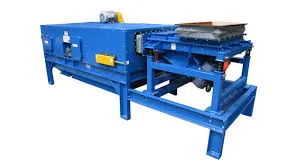
12 月 . 03, 2024 18:23 Back to list
How to Recycle PCB Boards A Comprehensive Guide
In an age where electronic waste is becoming a significant environmental concern, recycling printed circuit boards (PCBs) has emerged as an essential practice. PCBs are found in virtually all electronic devices, from smartphones to computers, and they contain valuable metals that can be recovered and reused. This article will guide you through the process of recycling PCB boards, emphasizing the importance of responsible disposal and the benefits of recycling.
Understanding PCBs
Printed circuit boards are essential components in electronic devices, serving as the backbone that connects and controls different electronic elements. They are typically made from a substrate material, usually fiberglass or epoxy resin, and are coated with copper tracks that allow for electrical connections. While these boards are crucial for our modern technology, they also contain hazardous materials such as lead, mercury, and cadmium, which can be detrimental to the environment if not managed properly.
The Importance of Recycling PCBs
1. Environmental Protection PCBs contribute significantly to electronic waste, which is one of the fastest-growing waste sectors globally. Recycling these boards prevents harmful materials from entering landfills and leaching into the soil and groundwater.
2. Resource Conservation PCBs contain precious metals like gold, silver, platinum, and other valuable materials. Recycling allows for the recovery of these resources, reducing the need for mining and extraction, which can have devastating environmental impacts.
3. Energy Efficiency Producing new electronic components is energy-intensive. Recycling PCBs often requires less energy than manufacturing new parts, contributing to lower carbon emissions and a reduced carbon footprint.
The PCB Recycling Process
Recycling PCB boards involves several key steps to ensure it is done safely and efficiently
1. Collection and Transportation
The first step in PCB recycling is the collection of discarded electronic devices. Many communities and electronics retailers offer drop-off points for e-waste. It is crucial to ensure that the collection service is reputable and compliant with local regulations.

2. Sorting and Dismantling
Once collected, the PCBs must be sorted from other materials. This may involve manually dismantling devices to separate the PCBs from casings and other components. This step ensures that only the boards are sent for further processing.
After sorting, the boards undergo mechanical processing, which involves shredding and crushing them into smaller pieces. This step aids in the liberation of valuable metals from the non-metal components of the board.
4. Chemical Recycling
Following mechanical processing, chemical methods are employed to extract precious metals. This could involve hydrometallurgical or pyrometallurgical techniques, depending on the specific materials involved. Chemical recycling helps to ensure that hazardous substances are treated appropriately to minimize environmental impact.
5. Refinement and Recovery
The extracted metals are then refined to attain a high purity level. This step allows for the recovery of silver, gold, and other metals, which can be sold back into the market for use in manufacturing new products.
6. Responsible Disposal of Non-Recyclables
Finally, any non-recyclable materials must be disposed of responsibly. This may involve safely treating hazardous substances or sending them to specialized disposal facilities.
Conclusion
Recycling PCB boards is not just a responsible environmental practice; it is also a necessary step towards sustainability in our increasingly electronic world. By understanding the recycling process and participating actively in e-waste recycling programs, we can contribute to conserving valuable resources while protecting the environment from potential harm. Always remember to choose certified e-waste recyclers who adhere to environmental regulations to ensure that your discarded electronics are handled correctly. By taking these steps, we can all play a role in the global effort to minimize electronic waste and make a positive impact on the planet.
Latest news
Unveiling the Power of Eddy Current Separator
NewsSep.25,2024
Transform Your Home Recyclin:home metal shredder
NewsSep.25,2024
The Future of Waste Management with Recycling Line Picker
NewsSep.25,2024
The Benefits of a Metal Recycling Plant
NewsSep.25,2024
Revolutionize Material Separation with Onwang Technology
NewsSep.25,2024
Innovative Waste Management: Unveiling the MSW Sorting Plant
NewsSep.25,2024